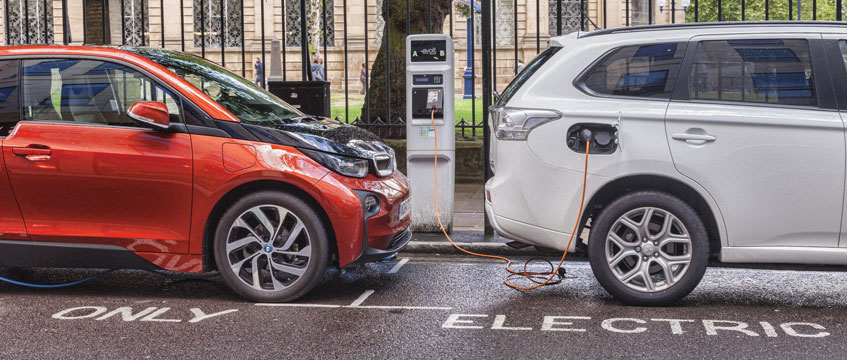Real estate has an opportunity in the demand for EV charging points
COMMENT: With the rise in electric vehicles potentially reaching the 5m mark by 2030, it is important for local authorities to understand where they should invest in charging points.
Many assume that the points can just be put on petrol forecourts. However, the reality is that these are far from ideal.
Petrol stations were not designed with electric vehicles in mind, with the current average speed of charging being one hour for 30 miles, while forecourts are designed for a five- to 10-minute pass. It is a lot more complex to simply set up a charging point – the space is not conducive to charging points, connectivity is not optimum, and there is no designated area for the person to dwell while their vehicle is charging.
COMMENT: With the rise in electric vehicles potentially reaching the 5m mark by 2030, it is important for local authorities to understand where they should invest in charging points.
Many assume that the points can just be put on petrol forecourts. However, the reality is that these are far from ideal.
Petrol stations were not designed with electric vehicles in mind, with the current average speed of charging being one hour for 30 miles, while forecourts are designed for a five- to 10-minute pass. It is a lot more complex to simply set up a charging point – the space is not conducive to charging points, connectivity is not optimum, and there is no designated area for the person to dwell while their vehicle is charging.
There is also the issue of waiting for a charging port to become free in the first place, which, depending on how long the individual is waiting, could disrupt the general flow of the petrol forecourt and add to dwell times – and frustration.
Petrol panic
The discussion over connectivity in relation to EV charging is a hot topic and regarded as essential in terms of the roll-out. It facilitates individuals to seek charging ports and availability, rather than wasting time, energy and electricity. Petrol forecourts are often not well-connected in terms of fibre, again potentially challenging the efficiency of the EV ecosystem infrastructure as the public require good connectivity to book in a slot and to have connectivity while charging.
Further challenges to this location being appropriate include the current petrol panic, with the shortage of HGV drivers leading to a shortage of petrol and diesel pumps for vehicles. More people are now considering electric vehicles since the fuel crisis, with searches for EVs going up by more than 60% during the height of the fuel shortage.
In order to capitalise on this demand, landlords and local authorities need to work with expert advisers now to strategise where to put charging points in order to optimise ease of use. In April 2021, there were more than 245,000 battery electric vehicles and 270,000 plug-in hybrid electric vehicles on the road. This number is only set to grow, especially with recent events.
Box-ticking
The UK government has pledged to ban the sale of new petrol and diesel cars by 2030 and of new hybrids by 2035, meaning this cooperation is vital. If the right infrastructure and enough charging stations are not in place for the demand, it will have a detrimental effect on retail, connectivity and the infrastructure of the country in general.
But where do chargers go? Surely this represents an opportunity for the commercial sector, where dwell time represents footfall, and for housebuilders where EV charging points means a big, fat tick in the ESG box. Either way, a strategy needs to be devised quickly for each region across the UK, and a quick roll-out is essential to capture the wave of interest and make a serious shift away from petrol-based vehicles.
With an increasingly environmentally-conscious society, Cluttons recognises the importance of EVs and the positive impact they will have. We are enthusiastic to continue and encourage this trend by ensuring that local authorities and landlords have the right foundations in place for this to be possible.
John Gravett is a partner and head of real estate management at Cluttons
Image © Linda Mckie/imageBROKER/Shutterstock











